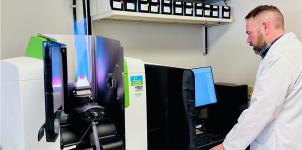Sterility Test Volume
The sampling quantities defined in USP <71> Sterility Tests are determined based upon statistical probabilities of identifying contamination, should it be present, given various article and batch sizes. The specific direction to follow is found in tables 2 and 3 in the chapter. Table 2 defines the minimum volume per test article to be inoculated into each sterility media type. Since there are two types of media used during a USP <71> sterility test, tryptic soy broth (TSB) and fluid thioglycolate medium (FTG or FTM), the quantity noted in the table represents half of the per-article test volume needed to complete a USP <71> compliant sterility test. Table 3 defines the minimum number of articles of a final product to be tested based on the batch size of the lot being assessed. Complying with the sampling guidelines in USP <71> provides the recommended level of stringency for sterility testing of compounded pharmaceutical products and is the minimum acceptable quantity to test to ensure confidence in a “Sterile” result.

